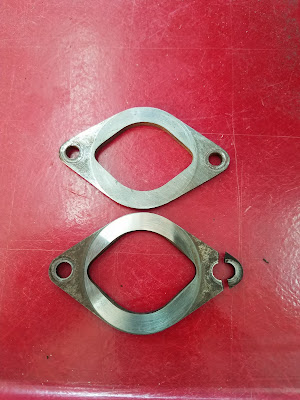Another great improvement that Moss Motors has made to MG's designs is to replace the hex-head bolt that clamps the small end of the connecting rod to the piston's wrist pin (gudgeon pin in Brit-speak). As designed by MG the hex-head bolt is almost impossible to get a socket on. Since it only needs 25-foot-pounds of torque to tighten, it could have been installed with a snug-fitting open-end wrench at the factory. Getting it out, many thousands of miles later, is another matter.
Although the bolt is continuously splashed with oil, it is separated from the combustion chamber by about two inches, and is shielded from that extreme heat only by the 1/2-inch-thick head of the aluminum piston. The result is that the oil turns to carbon over time, and locks the bolt in place, requiring perhaps three or four times the seating-torque to break it free. An open-end wrench will almost always round the edges off a hex-bolt under those circumstances. I needed Vice-Grips and a two-foot bar to break mine free! (I'm not sure what Brutus used when he removed the original pistons from the connecting rods, but I did get to deal with the results. Detailed in the next post.)
So, anyway, Moss's solution is to sell a set of socket-head-cap-screws (aka Allen screws) to replace the old bolts. As long as one has a metric hex-key socket to go on their torque wrench assembly is a snap, now. (Disassembly should be, too, but I hope I never find out.)
With all four pistons assembled, it was time to install them into the block.
 |
| New camshaft and bearings installed in block. |
 |
| Old and new camshaft thrust bearing plates. |
 |
| Original wrist-pin bolt on right; Moss's better idea on left. |
 |
| Pistons ready to install. |
No comments:
Post a Comment